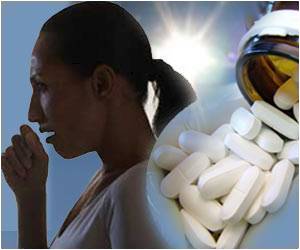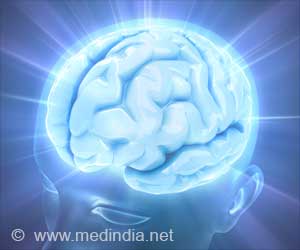On World TB Day 2011, Medindia interviewed Dr. P. Senthilkumar, Pulmonologist, to know the obstacles that hinder eradication of TB from the world.

A. The World Health Organisation( WHO) and the International Union against Tuberculosis and Lung Disease (IUATLD) collaborated with NGOs, to mark 24th of March as World TB Day. It was to observe the centenary of Robert Koch’s identification of tubercle bacillus on 24th March 1882. Each year there is a theme and a slogan, so the slogan for this year is “On the move against Tuberculosis-Transforming the fight towards Elimination."
Q. Tuberculosis is curable, yet society continues to ostracize and stigmatise TB patients. Why is that?
A. Previous experiences and movies. Movies around the 50s and 60s have romanticised TB projecting patients as coughing, bleeding and eventually dying. Before the 50s and 60s there was no concept of chemotherapy and TB patients were kept in ventilated sanatoriums. It was usually the patients with natural immunity that survived. Somehow the movie version of TB has been ingested. Hence scientific facts must be gotten right. TB is curable with correct treatment, and periodic monitoring by medical professionals trained in it.
Q. TB is complicated to handle. How has it become a primary concern?
A. TB is everyone’s problem especially in India and China and it affects the most productive age group, 20 to 40 years. It is also the largest killer in India. There are 20 lakh new patients in India apart from the ones yet to be cured. And that makes it up to one third of world TB patients in India alone. It is also disturbing to note that 3, 30, 000 people die every year and 8, 70, 000 are infectious making them capable of infecting others.
A. Direct Observation Treatment, Short Course (DOTS), is a procedure where medication is given under direct observation by a health worker. Since TB is a chronic disease the shortest course lasts for at least six months and depending on the severity, the duration is bound to increase to 9 months to even a year. If the treatment extends, then the motivation to continue the treatment decreases. Also, once the patient starts to get asymptomatic the motivation to continue treatment decreases.
Q. The population is vast, what are your suggestions to provide uniform services?
A. One of the challenges is the accessibility to the centres that provide DOTS. People from rural areas, hilly regions, find it difficult to reach the centres. Travelling to these centres could cost them their livelihood in case of casual labourers. In such cases, even post-men and school teachers are requested to deliver DOTS to patients living in remote areas.
There should be more centres set up to provide treatment.
Q. What is the difference between the treatment provided by the government and private hospitals?
A. DOTS are provided by the WHO and the government for free. The pills are administered thrice a week, every alternate day. Whereas in private hospitals 3 to 4 drugs are bought from pharmacies and the treatment is on an everyday basis. They are both equally effective.
When patients approach me, I spend time telling them the do’s and don’ts and patients are compliant. It is usually the uneducated who are not aware of the disease and importance of the treatment.
Q. Could you cite some of the current challenges in treating TB?
A. The emergence of Multi-drug Resistant Tuberculosis (MDR-TB) is dangerous. Drug resistant TB is not curable by usual TB treatment and treatment is 20 times more expensive and needs at least 1 and half years to get cured. The time needed for identification of Resistant Tuberculosis is long(5-6 weeks) and the test is expensive and not available commonly in usual labs; hence there should be more referral sites.
In addition, newer diagnostic methods should be implemented, cost factor should be considered and quicker identification must be enforced. Most importantly, research and development needs to be in place and encouraged. That is the theme behind this World TB Day 2011’s slogan- Transforming the fight Towards Elimination. This new plan, for the first time, identifies all the research gaps that need to be filled to bring rapid TB tests, faster treatment regimens and a fully effective vaccine to market.
Q. What is the frequently asked question?
A. Some patients are already under other medical treatments. So their primary concern is the interference of anti-TB drugs with the other medication. Their concern is justified because rifampicin (anti-TB drug) interacts with other drugs and decreases the effectiveness of oral contraceptives, anti-epileptic drugs, anti-HIV drugs etc. Hence the medical practitioner must review old drugs to ensure there is no interaction or adjust the dosage to keep the treatment effective, because TB by itself requires 3 to 4 drugs. Adverse effects cause problems, so other habits of the patient should also be considered, such as liver problems, alcohol history. The functioning of liver under such pretext should be monitored regularly.
Q. Can you share some of the other side effects?
A. The most common side effects of commonly used TB medications are nausea, vomiting and orangish- yellow discolouration of urine.
Anti-TB medication could affect visual accuracy. When such things happen, the physician should be informed. In case of doubts, the patient or guardian should have them clarified.
In general, the anti-TB medications are very safe. The prevention of MDR-TB is of utmost importance. In simpler terms, some bugs need 3 pesticides to kill it; similarly TB always needs 3 to 4 drugs to prevent it from becoming drug resistant. The wholesome regimen has to be adhered to ensure the treatment is effective.
Q. With the World TB Day round the corner, what would you propose as a positive contribution as a community to eradicate TB?
A. Support TB patients, do not push them away. They can do with all the encouragement starting with receiving a simple act of concern such as enquiring about their well-being. Health workers should exert pressure in a positive way so patients will stay on course when patients get asymptomatic.
Personally, I think people should be educated especially kids in the form of health education. The education system should emphasize the need to create a barrier to protect oneself from bacteria spreading through respiratory aerosol such as coughing or sneezing. Kids should be made aware of covering their nose and mouth with handkerchiefs while they cough or sneeze since TB and other respiratory infections like flu are air borne diseases.
Tuberculosis is curable! Many patients stand testament to the fact and have been completely cured making them fully able to resume activities of normal life. The eradication of any sickness is a collective effort by the society and it’s purely ignorance that is holding us back from eradicating a curable disease. Interestingly, this year’s slogan relates to the march towards elimination of TB from the face of the earth and it is with sincere hope of achieving the goal, Medindia thanks Dr. P. Senthilkumar for his views.
Source-Medindia













